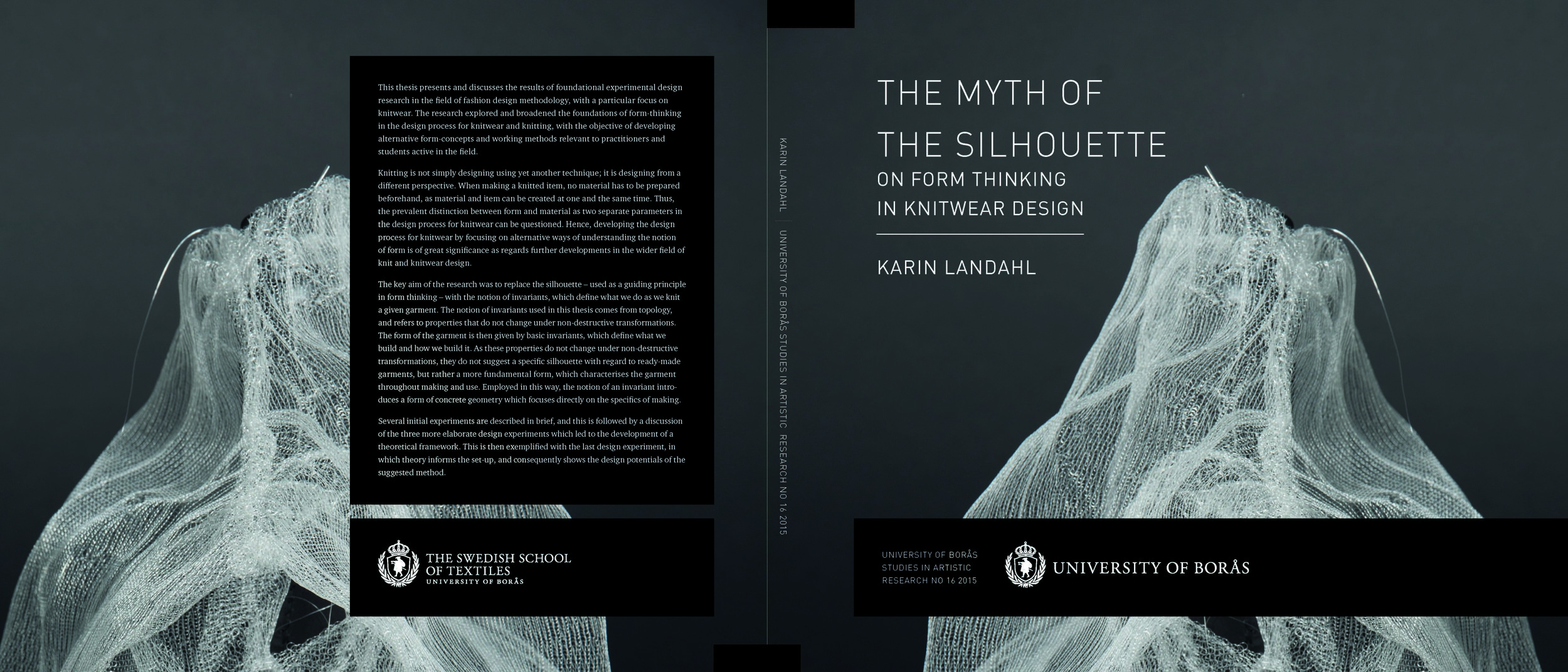
The Myth of the Silhouette [PhD dissertation]


The Myth of the Silhouette: On form thinking in knitwear design
Landahl, Karin, PhD Dissertation, 2015
Abstract [en]
This thesis presents and discusses the results of foundational experimental designresearch in the field of fashion design methodology, with a particular focus onknitwear. The research explored and broadened the foundations of form-thinkingin the design process for knitwear and knitting, with the objective of developingalternative form-concepts and working methods relevant to practitioners andstudents active in the field.
Knitting is not simply designing using yet another technique; it is designing from adifferent perspective. When making a knitted item, no material has to be preparedbeforehand, as material and item can be created at one and the same time. Thus,the prevalent distinction between form and material as two separate parameters inthe design process for knitwear can be questioned. Hence, developing the designprocess for knitwear by focusing on alternative ways of understanding the notionof form is of great significance as regards further developments in the wider field ofknit and knitwear design.
The key aim of the research was to replace the silhouette – used as a guidingprinciple in form thinking – with the notion of invariants, which define what wedo as we knit a given garment. The notion of invariants used in this thesis comesfrom topology, and refers to properties that do not change under non-destructivetransformations. The form of the garment is then given by basic invariants, whichdefine what we build and how we build it. As these properties do not changeunder non-destructive transformations, they do not suggest a specific silhouettewith regard to ready-made garments, but rather a more fundamental form, whichcharacterises the garment throughout making and use. Employed in this way,the notion of an invariant introduces a form of concrete geometry which focusesdirectly on the specifics of making.
Several initial experiments are described in brief, and this is followed by a discussionof the three more elaborate design experiments which led to the development of atheoretical framework. This is then exemplified with the last design experiment, inwhich theory informs the set-up, and consequently shows the design potentials ofthe suggested method.